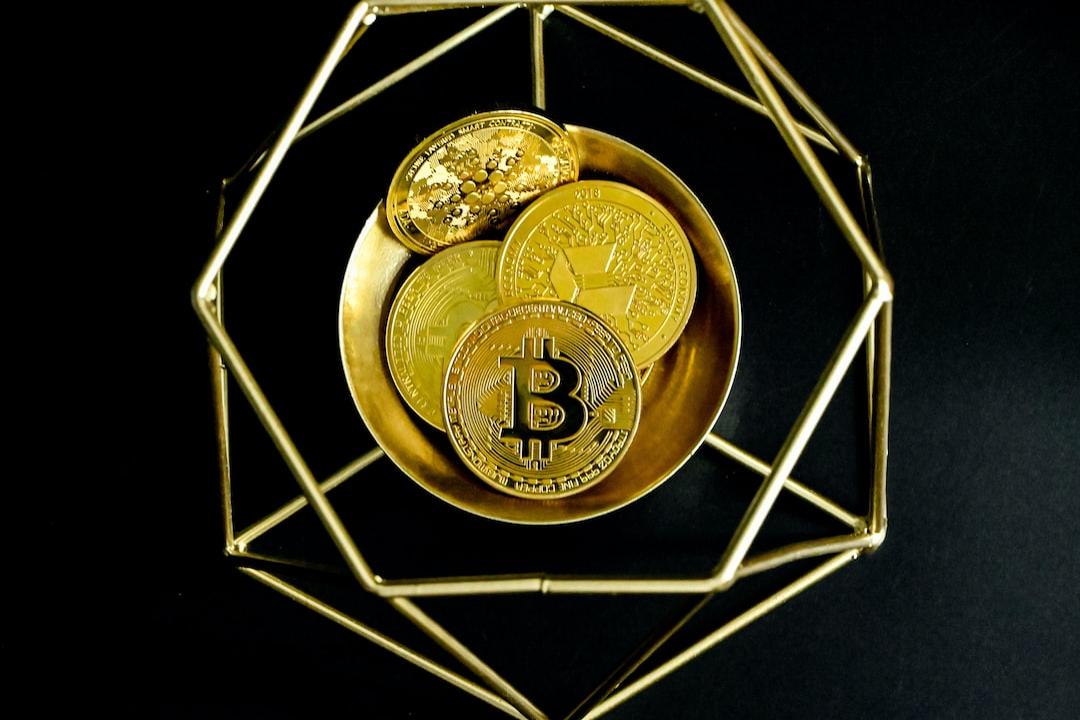First, we need to take a step back and look at the whole situation. The United States has the technological talent, financial markets, and regulatory policies to win the global cryptocurrency market, ensuring that the United States remains a financial and technological powerhouse in the 21st century. However, I believe that this time we do not have enough cypherpunks to save us.
The past 30 years have not only been a time of growth for our millennial generation, but they have also provided clues and background for the short-term and medium-term cryptographic policies we might expect. Among the most influential events and changes in the world of cryptocurrencies in the past few decades, one historical analogy and two major trends are particularly important:
1. The initial cryptocurrency wars of the 1990s involved an unfair fight with the stubborn elements of the National Security Agency in the US, proposed legislation to install a literal government chip in all your devices for unlocking on demand, and a popular grassroots rebellion led by developers against government overreach. This is the origin of the term “cypherpunks write code.” You should read this book about the cryptocurrency wars, or at least read this paper.
It accelerated the history of cryptography. It’s a story of the underdog fighting back, though due to profound cultural changes in America, this victory seems unlikely to be repeated in our cryptocurrency.
2. The spells of complacency and awakening: Unfortunately, the X generation (born between 1964 and 1980) got old, and since then, the X generation and the baby boomer generation have done some quite terrible and unconstitutional things together. Today, “crypto” poses a significant threat to the national order of “surveillance and control.” When we look at our young protagonists, namely the millennial generation and Generation Z (born between 1995 and 2009), the question is whether they might not care about the fight at all. They are used to erosion of civil liberties post-Patriot Act, post-COVID era. After living through twenty years of a $7 trillion global military disaster, they have never lived in a situation where the national security apparatus is looking inward. Many of them are even dismissive of the Twitter dossier and the censorship industrial complex of big tech companies. Peter Thiel and David Sacks wrote a prediction in the early 1990s about the dangers of campus cultural conformity, and SBF is just reminding people of what we already know — this kind of conformity may be performative, but now it’s harmful.
3. The end of American hegemony: When you combine #1 and #2, what you really need to understand is that a large part of government officials really think that the tech policies of the 1990s were a mistake, that the miracle of the open Internet and the economic growth it brought had a net negative impact on American society. Technology became the scapegoat.
While our concerns about hollowing out our manufacturing base and overfinancialization of the economy have some merit, many envy the closed internet of China, only seeing the “missed opportunity to contain misinformation,” which is a bit scary. We are no longer the only superpower, as bureaucratic institutions of competitors like China seem to be functioning in certain areas, and our leaders also seek more control.
Our culture has been gradually weakening, the delusions of our elderly ruling class at home are deepening, and this time we have a powerful adversary. We have to play a different game, focusing on “Moneyball” elections. The good news is: we will win. (Chapter five will discuss more on how this will happen) (I know you might think these trends have nothing to do with each other or at most have some connection to cryptocurrencies, but that’s what Pepe Sylvia says. We are in a life-or-death information war.)
Although the cryptocurrency market has been in a deep recession for the past two years, with declining trading volumes and heavy regulatory resistance, the activity of cryptocurrency developers this year is still strong. In the middle of the year, Alchemy found that the number of smart contracts deployed on EVM chains increased by 300% quarterly, while the installation of cryptocurrency wallets reached a historical high.
Electric Capital found that as of October, the number of monthly active developers contributing to open-source projects had sharply decreased year-on-year, but this can be attributed to several factors: regulatory indifference to the open-source ecosystem after the Ooki DAO ruling this year, more innovation and development at the application and infrastructure layers, and a more cautious approach to competition in the bear market.
a16z’s Cryptocurrency Market Status Index may be the best indicator to observe the overall market health. It also emphasizes that the number of open-source developers has decreased by 30%, but it has recorded some positive data: developer library downloads hit a historical high in the third quarter, while active addresses and mobile wallet activity reached a historical low. Is this the spark that will ignite the explosion of cryptocurrency applications in 2024? If I had to blindly invest in cryptocurrencies based on a single chart, it would be this:


The real market turnaround will begin when AI developers realize that cryptocurrencies are another battlefield for them.
In this digital age marked by rich AIGC, providing reliable, global, mathematically provenance and digitally scarce technologies is crucial.
Take deep fakes as an example: cryptocurrencies are extremely important in terms of timestamping, verification devices, and data. Without cryptocurrencies, it would be difficult to verify whether certain images or texts are from AI or non-AI, or from Washington or Beijing. Additionally, without the fees required by public chains, preventing generative DDOS attacks will also be a challenge.
The rise of artificial intelligence is seen as a “threat” to cryptocurrencies, just as mobile technology was once seen as a threat to the Internet. This view is obviously absurd. The advancement of artificial intelligence will only increase the demand for cryptocurrency solutions. While we may debate whether artificial intelligence is good or bad for humans (like we debate whether the iPhone is good or bad… but we still know they are obviously beneficial), AI is great for cryptocurrencies.
I personally welcome our machine overlords, bringing about the perfect machine currency: Bitcoin.
There is no need to overthink this, but Arthur Hayes (founder of BitMEX) wrote an article on this topic this summer worth noting. The two key elements for any artificial intelligence are data and computing power. Therefore, it seems reasonable that “artificial intelligence will trade a currency that maintains its purchasing power over time” describes Bitcoin perfectly.
Some criticize this view as oversimplified, especially considering two potential artificial intelligence application scenarios — micro-payments and smart contract execution — which have not yet significantly developed on Bitcoin. Some argue that AI agents may choose the blockchain with the lowest cost, rather than Bitcoin, due to the transaction friction in Bitcoin’s POW mechanism.
Dustin (Messari researcher) believes that the concept of an “energy-based currency” may be the opposite: AI agents may prefer to directly purchase Gas tokens (related computational resources).
DePIN, DeSoc, DeSci
I am permanently bullish on decentralized finance (DeFi), but I don’t necessarily “overemphasize” it because I believe that other market segments will perform better in the next year.
I do think that some of the top DeFi protocols in the field of decentralized exchanges will rebound after a year of steady trading volume, but I am not sure if the unit economics of DeFi and product-market fit are sufficient to offset the impending harsh regulations.
Additionally, the types of assets driving DeFi trading volume are also a concern. This year’s trading peak was primarily driven by MEME coins rather than breakthroughs in new applications. Perhaps I have considered too many doomsday scenarios for DeFi in Washington.
My focus has shifted to several key non-financial sectors in the cryptocurrency space. I like DePIN (Physical Infrastructure Network), DeSoc (Social Media), and DeSci (yes, Science!), as they seem less driven by rampant hype and focus on key solutions that extend far beyond our industry into the financial realm.
Last year, Sami (Messari researcher) helped popularize the term DePIN, and no one is better than him at painting the landscape of these hardware networks or explaining how these networks expand to truly compete with big tech companies.


Cloud infrastructure services are a $50 trillion industry in traditional markets, with DePIN accounting for only 0.1% of that. Even if we assume that 1% of online services adopt DePIN as their primary stack, the demand for decentralized redundancy alone could lead to a surge in demand. A 1% “insurance premium” to eliminate big tech platform risks could increase DePIN utilization tenfold. Not much is needed to change the status quo, especially in the demand for GPU and computational resources driven by artificial intelligence.
Social media presents similar opportunities; the major players in this field generated $230 billion in revenue last year (with half coming from the Meta family of companies), yet only a tiny percentage of creators are able to earn enough money through content creation.
We have already seen this changing (YouTube’s continued growth, Elon’s revenue sharing), and we have seen potential breakthrough DeSoc applications (Farcaster, friend.tech, and Lens), which seem more like the beginning of a J curve that is almost imperceptible at the outset rather than a false start.
Friend.tech shared $50 million with its creators in the first few months after launch, which is one way to attract users. I believe that DeSoc in 2024 will follow the hype of “DeFi summer” in 2020.
Finally, there is decentralized science. Of the DeSci projects we are tracking, 50% were established in the past year. One of the most outstanding OG cryptocurrency investors I know has already dedicated 100% of his time to this area.
In this market, the incentive mechanisms of cryptocurrencies make sense: trust in our scientific institutions may be at an all-time low, and the current system is riddled with bureaucratic inefficiencies, imperfect data methods, poor incentive mechanisms (requiring tenure through peer-reviewed papers), while cryptocurrencies have proven their ability to fund… scientific experiments.
To scale up, token sales and DAOs are aiming to fundamentally change how we conduct research, and the interest in longevity, rare disease treatment, and space exploration is large enough to drive the development of the field.
You can directly invest in DePIN, start using DeSoc applications now. However, I don’t yet know of a lazy way to express the investment thesis for DeSci. (VitaDAO?)
If you think of one, feel free to DM me anytime.

